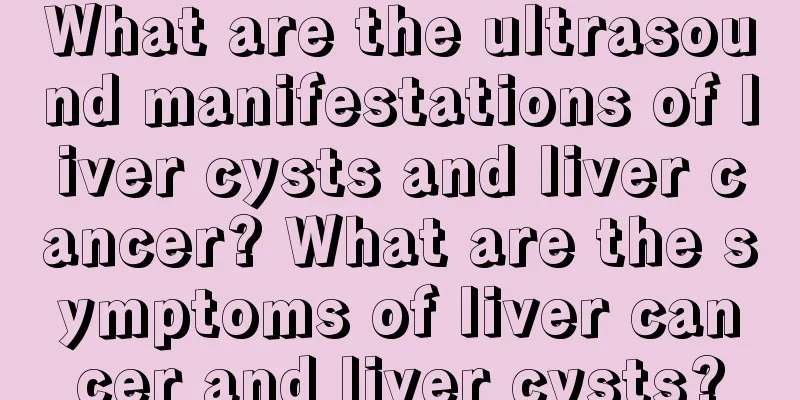7 things to note in interventional treatment of liver cancer. Brief analysis of interventional treatment of liver cancer via blood vessels

|
my country is a country with a high incidence of hepatitis and liver cancer, with more than 300,000 cases of liver cancer each year. Most patients are already in the middle and late stages when they are diagnosed, and only less than 20% of patients have the opportunity for surgical resection. Some early patients may also find it difficult to undergo radical surgery due to poor liver function due to cirrhosis. Transarterial chemoembolization (one of the interventional treatment methods) is considered to be the standard treatment for middle and late stage liver cancer. This method mainly increases the concentration of chemotherapy drugs in local tissues through catheter perfusion while blocking the tumor blood supply artery, causing tumor necrosis to achieve the therapeutic effect. Since the use of interventional treatment for liver cancer in the 1980s, it has quickly gained popularity among patients for its characteristics of less trauma, faster recovery, better efficacy, and relatively fewer complications. Clinical results over the past 20 years have shown that interventional treatment for liver cancer is significantly better than traditional treatment methods and has become the preferred method for the treatment of middle and late stage liver cancer. Interventional treatment of liver cancer is a method of diagnosing and treating liver cancer by inserting a special puncture needle and catheter into the tumor area of the liver under the guidance of imaging equipment (such as X-ray television, CT, B-ultrasound). This method usually uses local anesthesia to establish a channel through femoral artery puncture, insert the catheter into the hepatic artery, confirm the blood supply artery of the tumor by angiography, and then super-selectively insert the catheter into the blood supply artery of the tumor, and inject high-concentration chemotherapy drugs through the catheter to "poison" the tumor cells. Anticancer drugs and embolic agents can also be mixed and injected into the intrahepatic cancer blood vessels through the catheter, which can not only block the source of tumor blood supply, but also allow high concentrations of anticancer drugs to play a role in the tumor area, and the drugs stay in the tumor for a longer time. Finally, the tumor blood supply artery is embolized with embolic materials to "starve" the tumor. The postoperative wound is the same size as the wound after infusion puncture. Principles of transvascular interventional therapy: The efficacy of interventional treatment for liver cancer is determined by the blood supply characteristics of liver cancer. Under normal circumstances, the liver is supplied by the hepatic artery and portal vein, of which the portal vein accounts for 75% to 80% and the hepatic artery accounts for 20% to 25%. The blood supply of liver cancer is just the opposite. More than 90% to 95% of liver cancer is supplied by the hepatic artery, and the portal vein supplies very little. This makes treatment convenient. Through the hepatic artery catheterization, drugs can directly enter the liver cancer tissue, increase the local drug concentration, and kill cancer cells. In addition, some embolic substances such as iodized oil, gelatin sponge, and biocompatible embolic microspheres are used to block the blood supply artery of liver cancer, cut off its nutrition, and the tumor tissue will necrotize, thereby achieving the purpose of treatment. The following liver cancer patients can undergo liver cancer interventional treatment: 1) Primary or metastatic liver cancer that is considered unresectable for various reasons, or small liver cancer that the patient does not want to undergo surgery. (2) As a preparation before surgery, interventional therapy can shrink liver cancer and make it easier to remove. In addition, intervention can reduce the spread and recurrence of the tumor. (3) Patients with incomplete liver cancer resection, postoperative recurrence, or failure of other treatment methods. (4) If liver cancer lesions rupture and bleed, this method can stop the bleeding immediately and kill the lesions at the same time, and has less risk than surgical operations. (5) No serious damage to liver and kidney function. (6) Patients without severe jaundice and ascites. (7) The patient is in good general condition and has no serious hemorrhagic diseases. |
Recommend
Symptoms of advanced liver cancer
Liver cancer is a malignant tumor. In the late st...
Does anyone want their ears to burn?
In life, everyone has experienced the phenomenon ...
How long can you live if ovarian cancer recurs
Ovarian cancer is often in the late stage when it...
My tongue feels uncomfortable as if it's burned
If you want to taste a variety of delicious food,...
What is the best test for lungs?
The incidence of lung diseases has been relativel...
How to eliminate body acid
There are actually many ways for the body to excr...
Is skin cancer hereditary?
Is skin cancer hereditary? Skin cancer is very co...
What are the dangers of drunk driving?
Drinking is a common phenomenon in normal times, ...
What is the cause of perianal itching and moisture
Perianal itching and dampness is a common disease...
How to remove super glue from skin?
Super glue is a product that we use frequently in...
For early liver cancer, the symptoms are obvious
The symptoms of early liver cancer are what peopl...
Is it normal that my heart rate is around 60 when I am at rest?
The heart rate actually needs to be determined ac...
What tests can check immunity
A person's immunity is closely related to the...
Why does silver turn yellow
The original color of silver is white. It will un...
Root canal treatment for decayed teeth
Tooth decay does not only occur in children. Many...









